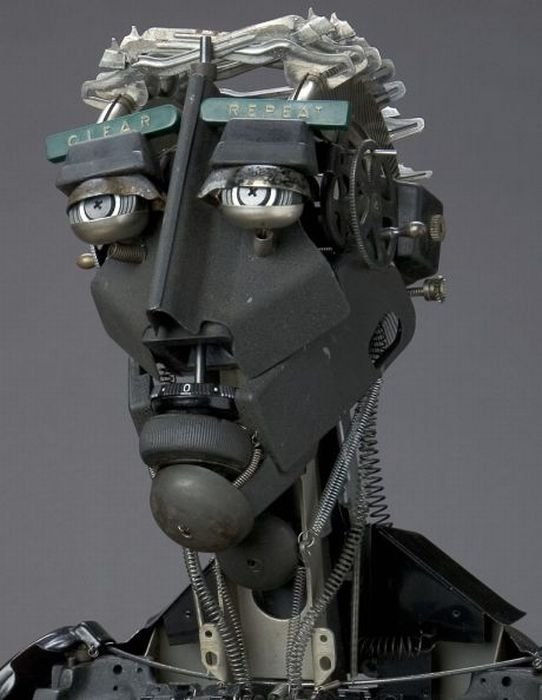|
|
Sculpture Made Out Of Typewriter Parts
|
Early innovations
Even though many modern typewriters have one several similar familiar designs, the invention the typewriter was incremental, provided by numerous inventors working independently or in competition with each other over a series decades. As with the automobile, telephone, and telegraph, a number people contributed insights and inventions that eventually resulted in ever more commercially successful instruments. In fact, historians have estimated that some form typewriter was invented 52 times as thinkers tried to come up with a workable design.
In 1714, Henry Mill obtained a patent in Britain for a machine that, from the patent, appears to have been similar to a typewriter, but nothing further is known. Other early developers typewriting machines include Pellegrino Turri, who also invented carbon paper. Many these early machines, including Turri's, were developed to enable the blind to write.
In 1829, William Austin Burt patented a machine called the "Typowriter" which, in common with many other early machines, is listed as the "first typewriter". The Science Museum (London) describes it merely as "the first writing mechanism whose invention was documented," but even that claim may be excessive, since Turri's invention pre-dates it. Even in the hands its inventor, this machine was slower than handwriting. Burt and his promoter John D. Sheldon never found a buyer for the patent, and it was never commercially produced. Because the typographer used a dial, rather than keys, to select each character, it was called an "index typewriter" rather than a "keyboard typewriter." Index typewriters that era resemble the squeeze-style embosser from the 1970s more than they resemble the modern keyboard typewriter.
|
|









